Why some people struggle to swallow pills or apply eye drops – and tips to make it easier
Why is it not recommended to throw your head back when swallowing your medicine? And can you cut or mash up your pills or pour the content of your capsules into water? Also, get an optometrist's recommended technique to apply eye drops.
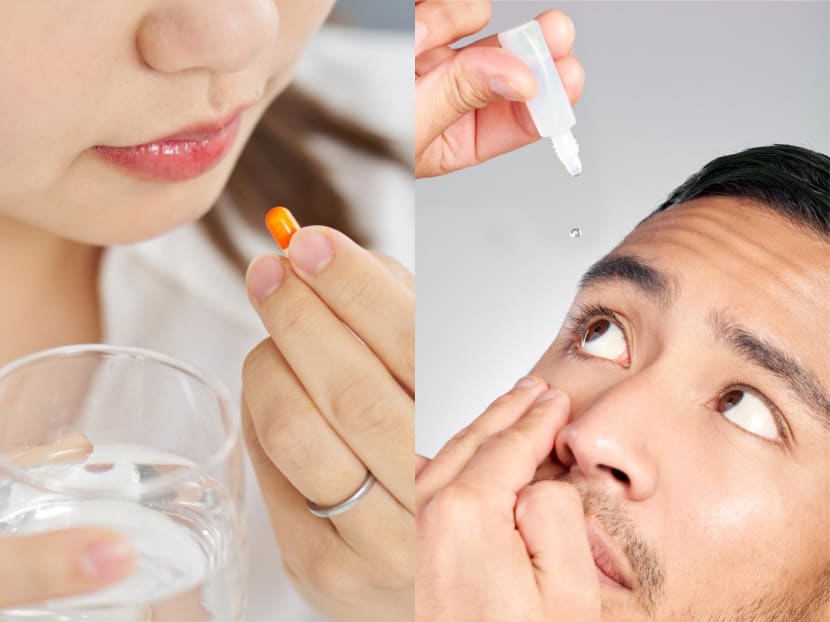
(Photos: iStock/mapo and PeopleImages)

This audio is generated by an AI tool.
You’re not alone if you struggle to swallow a pill that could rival a S$1 coin (okay, we exaggerate but have you seen the size of some supplement tablets?). Or you often end up with a wet face when applying eye drops because you can't help but blink.
It’s a tale as old as the need to recover, and if you’re trying to get a tablet down your throat or just apply some eye drops, it can feel like your body is working against you. Find out why your body functions that way along with tips and techniques that do not involve cutting pills, opening capsules or buying more eye drops.
PILLS AND CAPSULES
1. Why do I have a hard time swallowing them?
It can be challenging because you’re dealing with different consistencies: A solid and liquid. “This mixture can be more challenging to swallow, even for healthy individuals, when compared to swallowing a single consistency,” said Pamela Oh, a senior speech therapist with Ng Teng Fong General Hospital (NTFGH).
That’s because you’d require a fair amount of mouth control over the water that flows down the throat quickly – and still be able to push the pill down at the same time, said senior speech therapist Cheryl Lee from Alexandra Hospital (AH).
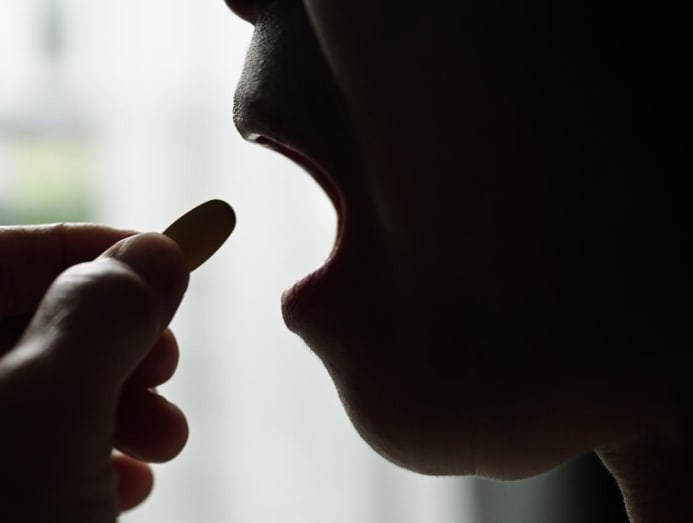
Or, you could simply be born with a smaller-than-average mouth, highlighted Pharmaceutical Society of Singapore (PSS). “Some studies suggest an association between a smaller mouth size and difficulty in swallowing pills, which may explain why more women experience pill aversion.”
And if you have choked on a capsule before, you may experience anxiety and fear when you next attempt to swallow one, noted PSS. “This anxiety can increase muscle tension around your throat and reduce saliva flow, preventing the swallowing process.”
That difficulty in swallowing is known medically as dysphagia, said Dr Melvyn Wong, a family physician and consultant with Raffles Medical. Other than structural issues and past trauma, dysphagia can also occur with conditions like GERD (gastroesophageal reflux disease) that cause throat discomfort, he said.
2. Would throwing the head back help?
On the contrary, this action “narrows the throat and increases the risk of choking, especially for those with an existing swallowing difficulty”, said Dr Wong.
Oh added that throwing back the head actually puts you at “a higher risk of fluid or medication entering the windpipe”. “This may result in a chest infection, she cautioned.
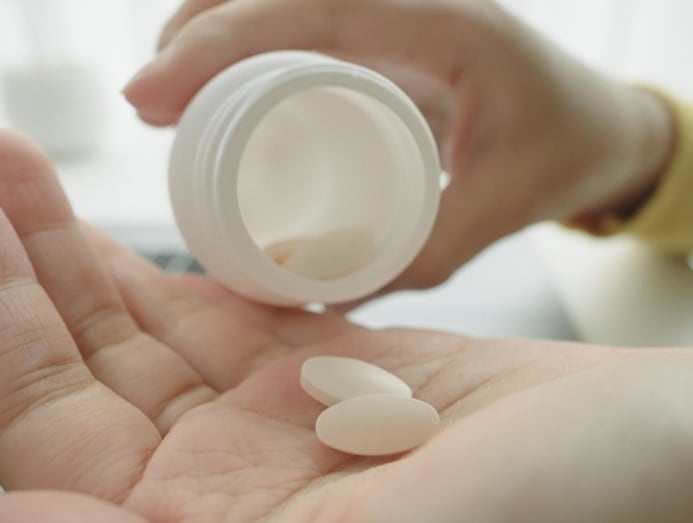
Instead, tip your head up a little to mimic swallowing, said Daphne Chan, AH’s senior principal pharmacist. “It is a psychological move to help you think that the pill is going down. Once you are more familiar with swallowing, this action is not required at all. After all, we don’t throw our heads back when eating our favourite bak chor mee.”
3. What if I cut, mash or dissolve them in water?
Check with your doctor or pharmacist before you attempt to alter your medicine.
Some pills are “designed to release their content slowly over time”, said Joanne Lai, NTFGH’s pharmacist. “Crushing these pills can result in the entire dose being released at once, leading to increased side effects or toxicity,” she said.
There are also medications, said Lai, that are formulated to prevent stomach irritation and crushing them “may increase the risk of oropharyngeal or gastric irritation”.
4. What's an efficient swallowing technique then?
There are a few, going by the techniques recommended by these experts:
Moisten the mouth first: Have a small sip of water to moisten the palate, said Chan. “Then, stick the pill at the back of the mouth and swallow some water. Follow with another gulp of water if you feel that it is stuck.”

Count and swallow: Oh suggested placing the pill on the middle part of the tongue instead. Then, take a gulp of water and count 1, 2, 3 before swallowing. “Position your head chin down, don’t throw it back, to help facilitate pill-swallowing.” In general, about 50ml of water is all you need, she said.
Try the pop bottle method: Use the sucking motion of drinking from a bottle to swallow the pill, shared PSS. First, place the pill on your tongue, seal your lips around the opening of a bottle filled with water, and drink. The suction helps the pill to glide down more easily, said Dr Wong.
Use a pill-swallowing cup: It is designed to hold the pill and allow it to mix with water as you drink, said Dr Wong, making swallowing easier.
Mix with a spoonful of food: Soft foods such as yoghurt or porridge can help mask the sensation of swallowing a pill, said Dr Wong.
Try a medication lubricant: It may help in the ease of swallowing tablets, said Oh.
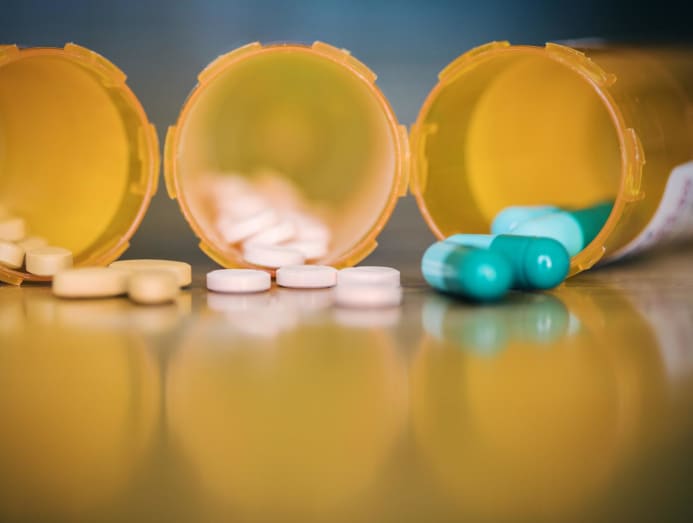
5. What you still can't swallow after all that?
Fortunately, the same medicine can come in different shapes and sizes.
“For instance, those who find round paracetamol tablets difficult or bitter to swallow can consider alternatives such as film-coated, oblong paracetamol tablets with improved taste profile; a smaller capsule form; effervescent tablets; or liquid formulation,” said PSS.
There are also dissolvable formulations that are meant to be placed under the tongue, according to PSS. No swallowing required.
Though rarely available, you can try asking if “there are patch or topical formulations”, suggested Chan.
“If you consistently receive pills that are difficult to swallow, inform your doctor,” said Dr Wong. “This feedback can help them source for a version of the medication with smaller or easier-to-swallow pills in the future. It is a simple but effective way to make medication-taking more manageable.”
EYE DROPS
1. I can't stop blinking! Why is it so difficult to apply eye drops?
That’s because your cornea has 300 to 600 times the nerve density compared to your skin, said Dr Roy Tan, an ophthalmologist and oculoplastic surgeon from Asian Healthcare Specialists, Cornerstone Eye Centre (Novena).
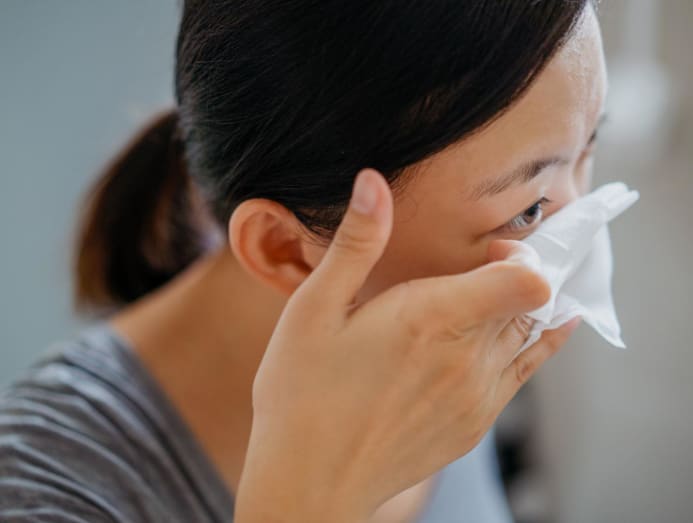
“A tiny touch to your cornea can elicit a strong and instant blink response. However, your conjunctiva, the clear membrane covering the white part of your eyes, doesn't have nerve endings and won't cause a blink reflex,” he said.
There’s also the issue of accurately applying the drops – all while ensuring you don’t touch the bottle tip to your eye or eyelid to avoid cross-contamination. “As patients fear accidentally touching the bottle to the eye, they hold the bottle further away, hence, increasing the difficulty in aiming,” observed NTFGH’s senior optometrist Fifiana Tan.
In fact, that’s not the only thing going against you. “In an observational study of primary care sample of eye-drop users, up to 40 per cent of patients reported more than one problem with eye drop instillation,” said Tan.
“Other common challenges include difficulty in squeezing the bottle, accidental blinking and poor visibility of the eye drops.”
2. What's a good way to do so without getting those drops all over my face?
Tan has the following technique:
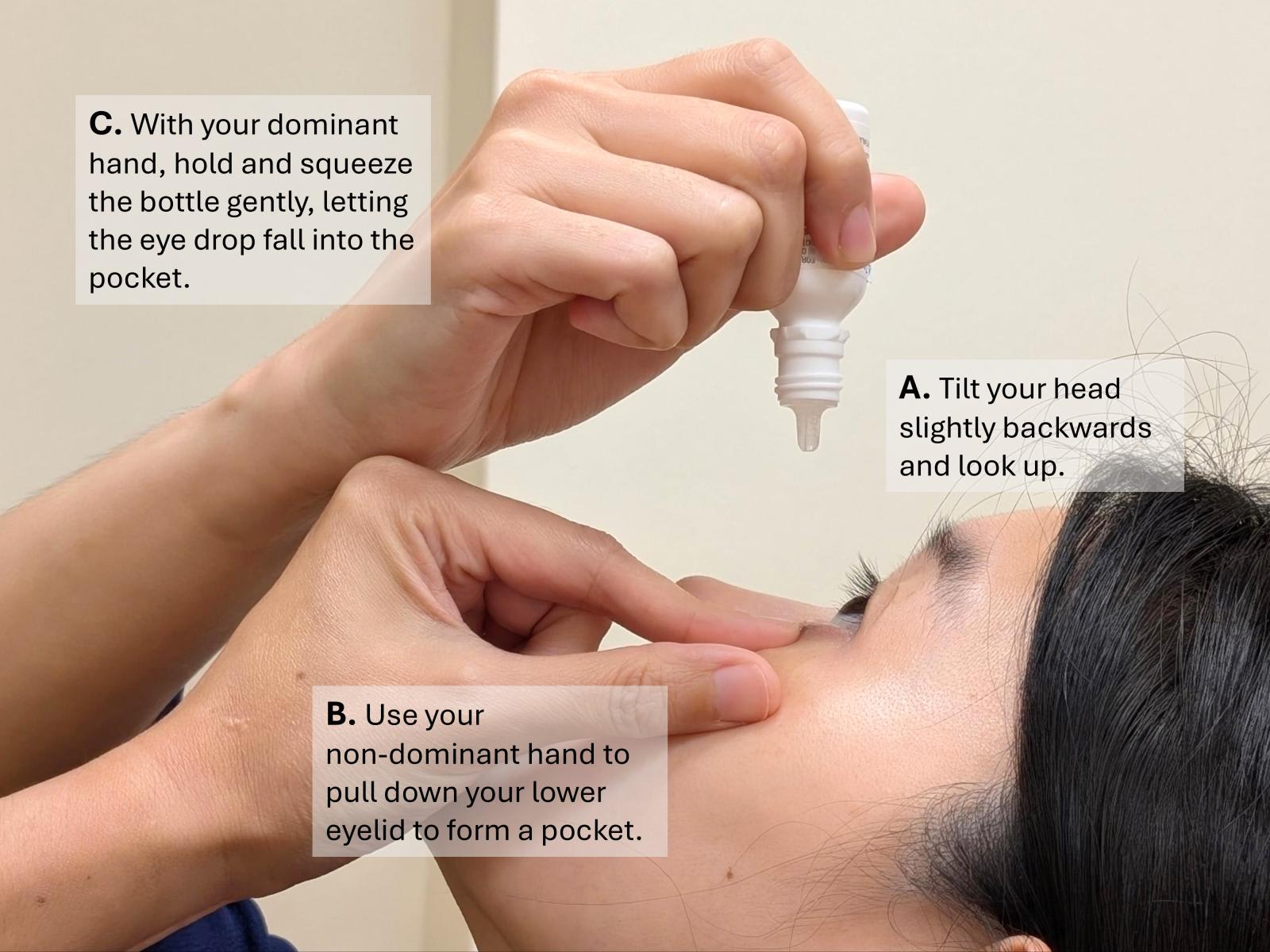
To improve your aim, “rest the hand holding the bottle on the back of the hand pulling the eyelid”, said Tan. “This way, you can be more certain of the distance between the bottle and your eye. Then, with the tip of the bottle positioned steadily within your sight, the droplets are more likely to get into your eye.”
If you blink a lot, Dr Wong suggested looking to the side or up instead of directly at the dropper. “Place a clean tissue just below the eye to help absorb excess droplets, reducing discomfort,” he said.
Avoid squeezing or spraying because the droplets’ high speed makes it more uncomfortable for the eye, said Adjunct Associate Professor Loon Seng Chee, the head and a senior consultant with AH’s Department of Ophthalmology.
It is important to maintain the eye drop in the eye for about a minute for it to work, said Tan. Consider closing your eyes and/or compressing the corner of your eye near the nose after applying, she said.
3. What if that still doesn't work?
Try an eye-drop-assistance device. "They come in many different designs, from the silicone sleeve that rests on the nasal bridge to the plastic device placed around the eyeball," said Tan.
"The benefits of these devices are not universal as there are variability in the challenges faced by each individual, facial features and even the force requirements of eye drop bottles," she said.





